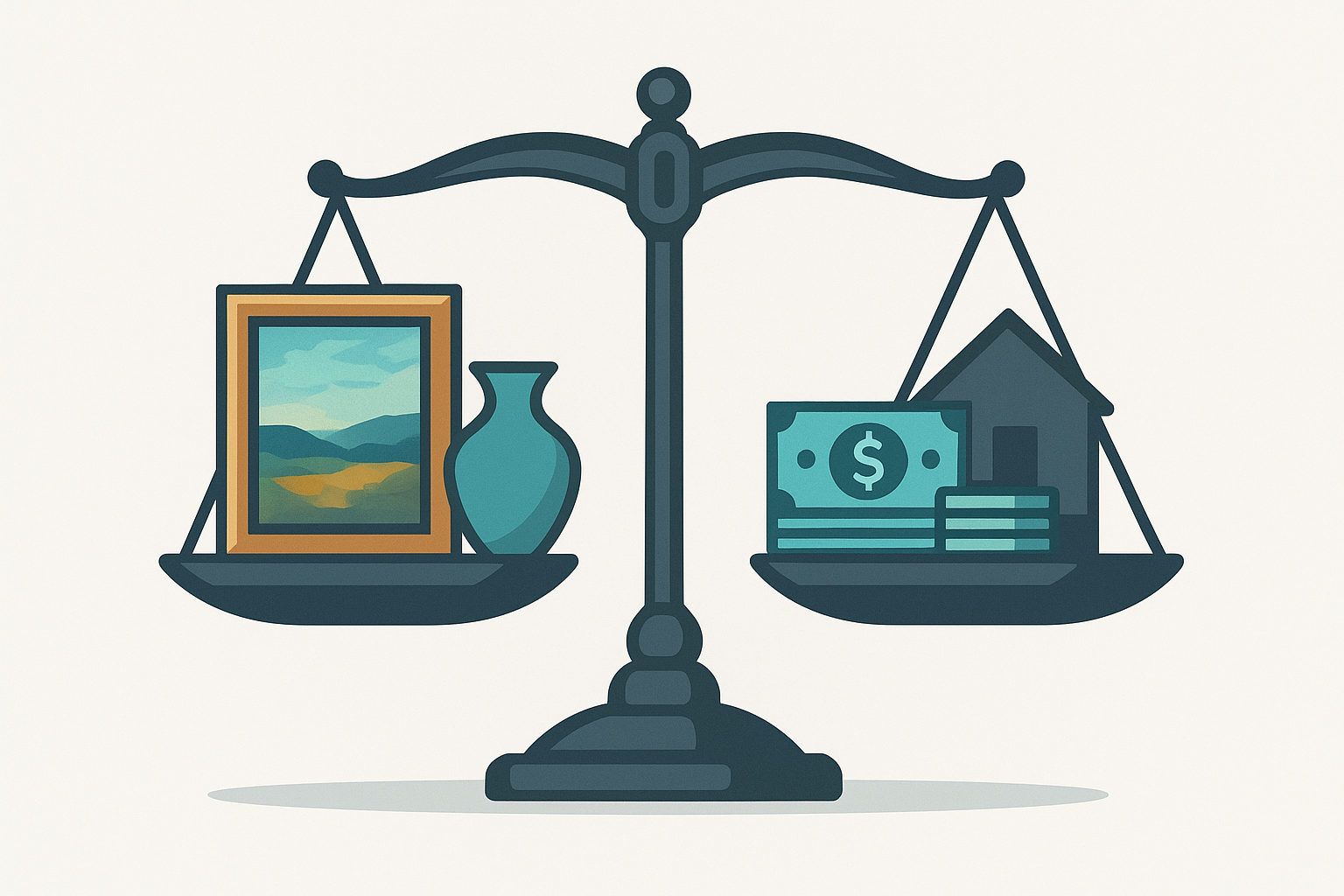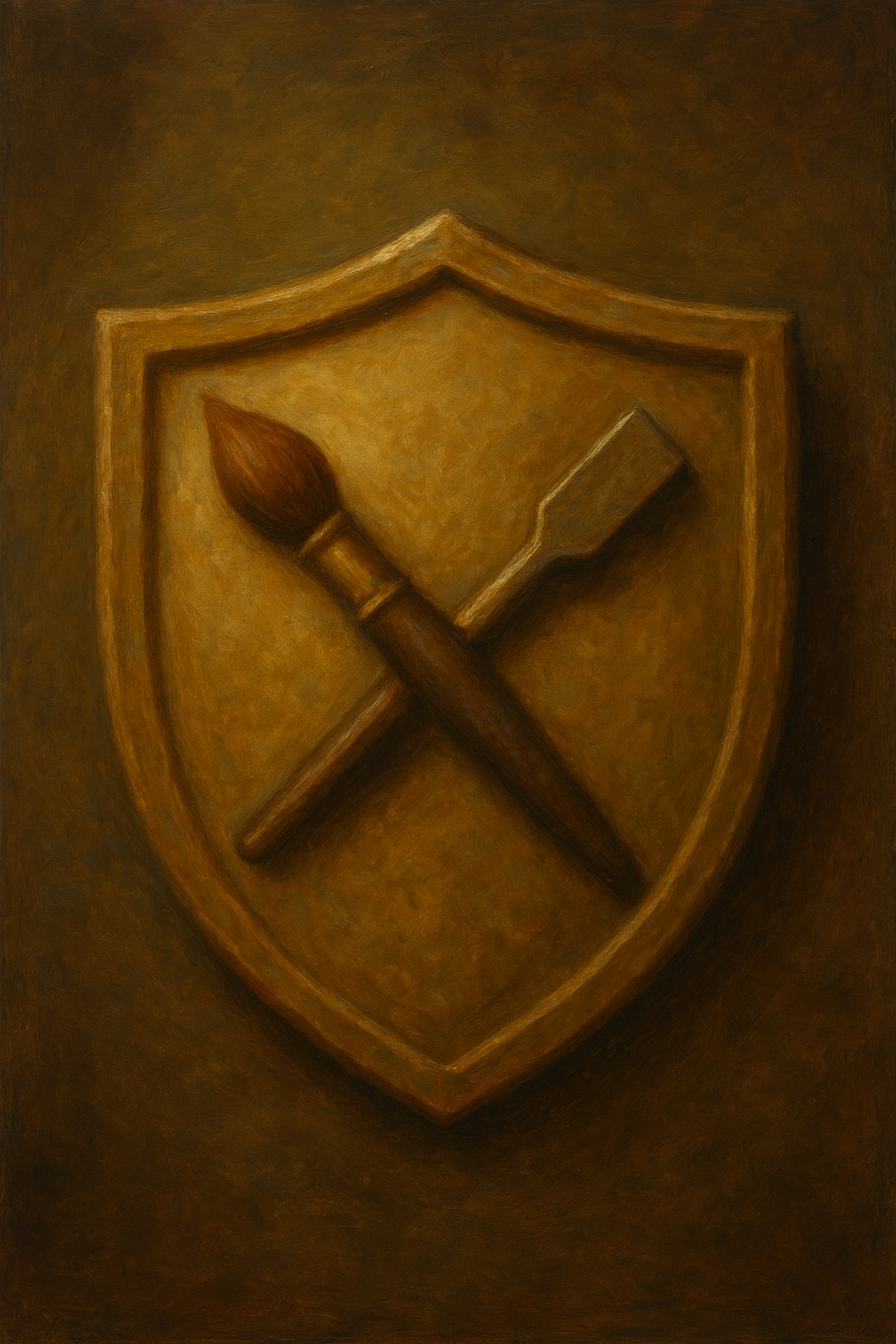






When you’re facing divorce and you own valuable art, antiques, or collectibles, you’re probably wondering who gets the art and collectibles in a divorce. The answer can sometimes be tricky. Dividing art and collectibles involves nuanced legal rules, careful property valuation, and strategic negotiation, all of which can dramatically shape your divorce settlement.
Whether you’re managing inherited heirlooms, a shared modern art collection, or high-value antiques, knowing how courts divide these assets helps you protect both their financial and emotional value.
Courts rely on discovery procedures, financial tracing, and professional appraisals to ensure accuracy. Each party must disclose all assets and provide inventories, receipts, certificates of authenticity, and insurance records. If there’s suspicion of hidden assets, courts can engage forensic accountants to trace ownership through galleries, storage rentals, or bank records.
Incidentally, when it comes to art and valuable collectibles, full transparency is always the safest route making accurate property valuation essential to a fair divorce settlement. Courts require certified appraisals that meet professional standards rather than informal or insurance-based valuations.
Certified appraisers (AAA, ASA, or ISA) with expertise in the relevant category of art or antiques are typically appointed. Their job is to produce Uniform Standards of Professional Appraisal Practice (USPAP) compliant reports detailing condition, provenance, and recent comparable sales, ensuring credibility in court.
APPRAISAL CHECKLIST: A reliable appraisal should include certification from AAA, ASA, or ISA, and USPAP-compliant reporting with photos and condition notes.
The state where you file for divorce determines how your art collection and collectibles will be divided. This choice can influence whether you retain most of your collection or lose half in the divorce settlement.

In community property states such as California, Texas, and Nevada, all assets acquired during marriage are divided equally. That means if a painting was purchased during your marriage, the court presumes both spouses own 50%, regardless of who bought it or cared for it.
In equitable distribution states, courts aim for fairness, not necessarily equality. A judge might award one spouse 80% of an art collection if they curated and maintained it for years while the other focused on different contributions to the household. In these states, courts decide what’s fair based on the marriage’s length, each spouse’s contributions, and their financial futures.
Take Note: State Law Makes All the Difference. Your state’s laws can mean keeping 50% or 80% of your collection.
Not every artwork or antique is subject to division. Courts usually classify items as separate property if they were purchased before the marriage, inherited from family, received as personal gifts, or acquired after separation.
However, even art that begins as separate property can become part of the marital estate if boundaries blur. Dividing art and collectibles often turns on how each item was purchased, maintained, or stored but these distinctions can fade over time if the assets become mixed or reclassified, commonly through commingling, transmutation, or appreciation in value.
Commingling happens when separate and marital assets are mixed so thoroughly that they can’t be distinguished. Examples include:
TIP: The Paper Trail Saves Your Collection. Keep separate accounts and detailed records.
Transmutation occurs when you intentionally change separate property into marital property, such as by:
States differ on what counts as proof, but consistent documentation or behavior often determines the outcome.
Meanwhile, if your art increases in value during the marriage, courts examine whether the appreciation was passive (due to market trends) or active (due to marital efforts). Only the latter is typically divisible.

Losses can occur quickly when it comes to dividing art and collectibles, especially when disagreements over valuation push the courts to order a forced sale, which often reduces total returns. The Macklowe divorce, where a $700 million collection was auctioned for $922 million, remains a cautionary example of this.
To protect your collection, act early and deliberately. Begin by documenting everything. Photograph each piece, record acquisition details, and maintain clear provenance files. Disclose every piece you own and maintain proof of purchase, as these records help prevent disputes over assets.
Additionally, plan for taxes, maintenance costs, and post-divorce logistics to avoid surprises once proceedings conclude. By taking these steps and also seeking professional property valuation, you not only safeguard your assets but also position yourself for a more equitable divorce settlement.
The Forced Sale Nightmare: When couples can’t agree on value, courts can order auctions. You lose control over timing, pay high fees, and face taxes.
Q. Can I keep my grandmother’s jewelry collection if it was left to me specifically?
A. Yes. Inherited property is usually separate, but you must prove it was meant solely for you and not mixed with marital assets.
Q. What happens if my spouse and I can’t agree on what our art collection is worth?
A. Courts will appoint professional appraisers. If both sides’ experts disagree, the court may order a sale and divide the proceeds. Mediation is often a better solution.
Q. Do I have to disclose artwork stored at another property?
A. Yes. Every item—whether at home, in a gallery, or storage—must be disclosed. Failure to do so can lead to financial penalties or loss of ownership.
Q. Can we share custody of valuable art pieces?
A. Yes. Couples sometimes agree to alternate possession of major works or family portraits, provided insurance and care responsibilities are clearly defined.
By understanding how courts approach property valuation, keeping clear documentation, and securing qualified appraisers, you can protect both the emotional and financial worth of your art collection.
When facing who gets the art and collectibles in a divorce, knowledge and preparation are your most valuable assets and professional appraisal can make the difference between keeping or losing your collection. AppraiseItNow’s certified experts provide legally recognized and USPAP-compliant appraisals, court-ready documentation and fast turnaround. Contact us today to schedule an appraisal and take a step toward protecting your legacy.




